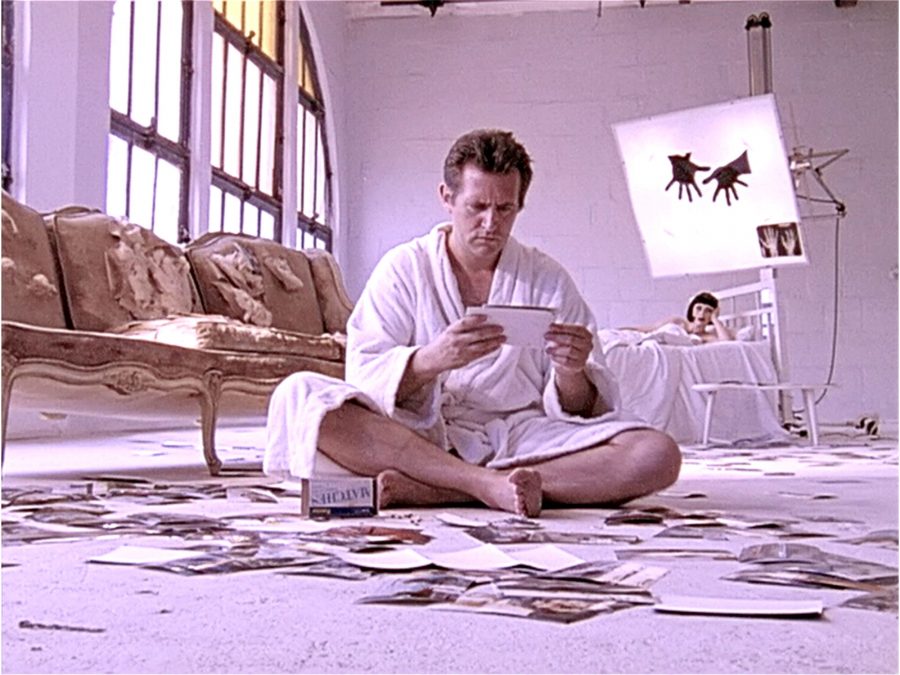In 1970, J.G. Ballard’s The Atrocity Exhibition was first published by Jonathan Cape in the UK. This anti-novel has had a complicated publication history: all 15 of the (linked) stories that make up its chapters had already been published separately over the previous four years; in America, Doubleday & Company pulled their scheduled 1970 publication and destroyed all their printed copies over fears of lawsuits from celebrities named in the stories. It was then published in the US in 1972 by Grove Press under a different title, Love and Napalm: Export USA. A revised, annotated, illustrated and expanded edition (four extra stories) was published by Re/Search in 1990, and has since become the standard version.
Most importantly, with its fragmented form, its Protean characters, its deep-seated ambiguity and its non-narrative structure, The Atrocity Exhibition was deemed unfilmable. Adapting with Michael Kirby (who also plays Dr Nathan in the film, and died of cancer before the post-production was complete) and working from a microbudget, Jonathan Weiss took up the challenge – and while it is the director/co-writer’s first and only film, it is a dizzyingly sophisticated puzzle box of twentieth-century angst, as elusive and impenetrable as a humanity driven in maddening circles by its own postmodern condition.
“The following film was created by Dr Travis of our institution,” says a voiceover at the beginning of Weiss’ feature. “He referred to it as The Atrocity Exhibition. It is the only trace remaining of his tenure with us. His present whereabouts are unknown, and there is some doubt as to whether he is even still alive. The film constitutes a remarkable document of his mental breakdown. He used both his colleagues from the institute, as well as patients, as actors in his psychodramas, while playing himself in various incarnations.”
In other words, Weiss’ film also purports to be Travis’ film, and viewers will quickly find themselves utterly confused as to where the boundaries between them lie, and indeed whether Dr Nathan’s search for the long-absent Travis, and his chorus-like commentary on the nature and interpretation of Travis’ film, constitute a part of the film-within-a-film, or are taking place beyond it.
In a sense it does not matter: for Weiss and Travis are equally taking incomprehensible events of the last few decades — the violent deaths of iconic celebrities, the outrages of the Vietnam war, the fear of nuclear obliteration and the existential dread of space travel — that have come to haunt the collective unconscious as perverse psychopathologies, and are then, just as equally, reconstituting them as both alternative reality and outsider art.

Travis — whose name keeps altering in the film, but always begins with the letter ’T’ — restages generalised traumas in his film in an attempt to give them a form that he can personally understand, much as Dr Nathan seeks an explanation for Travis’ renegade behaviour (and much as Ballard wrote his book as a response to the sudden and inexplicable death of his first wife Mary from pneumonia).
This is a film, or films, about the quest for meaning in an irrational, indeed insane world — and having picked and mixed from Ballard’s already difficult collection, having deconstructed and atomised what he sees being mediated around him, and having interwoven archival and fictive footage, Weiss invites viewers to pick up — and apart — the pieces and to reassemble them after their own hermeneutic inclination. No two viewers are likely to see this film in the same way.
“What are you looking for?”, asks Karen Novotny (Anna Juvander), Travis’ model, muse, lead actress and lover whose appearance and hairstyle radically change throughout the film. “I’m looking for the real one. A real one. A right one. The real one anchors, The rest risks vanishing”, replies Travis, seated on the floor of his apartment as he sorts through photographs spread out in front of him – much as we too are sifting for truth in the film’s assorted images.
Travis’ obsessions with World War III, with wounds and plastic surgery, with the suicide of Marilyn Monroe and the assassination of J.F. Kennedy, with car accidents (also fetishised in Ballard’s 1973 novel Crash, adapted to film by David Cronenberg in 1996), with astronauts, with thermonuclear apocalypse, all represent ancient anxieties transformed into more contemporary icons and archetypes.
“What the patient is reacting against”, observes Dr Nathan, “is simply the phenomenology of the universe.” At least within the film(-within-the-film), Travis appears to be occupying a universe different from our own, where the Vietnam War (which ended in 1975) still rages on, even as footage of the Space Shuttle Challenger disaster (in 1985) already exists.
This spatiotemporal disjunction is most clearly reflected in Travis’ apartment, whose interiors keep changing, even as copies of Time and Newsweek magazines can be found on display there that have not, as Travis points out, “been published yet.” Of course, this alternative universe might be no less a construct of Travis’ film than it is of Weiss’ – but the point is that it mirrors aspects of our own world through an unusual chronotope, as though reality had been reconfigured as a dream.
Accompanied by J.G. ‘Foetus’ Thirlwell’s score of samples and musique concrète, and shot in Academy ratio to accentuate a claustrophobic perspective that collapses recent history and the world at large into one man’s artfully paranoid psychodrama, The Atrocity Exhibition plays like a kaleidoscope of imagery and ideas whose meaning is ever in flux. This, naturally, ensures that multiple viewings may well be required, but will also be repaid in full.
The Atrocity Exhibition is released on Blu-ray, 12 September, 2022, by Screenbound.
The post Discover the radical energy of this unsettling psychodrama appeared first on Little White Lies.



0 Comments